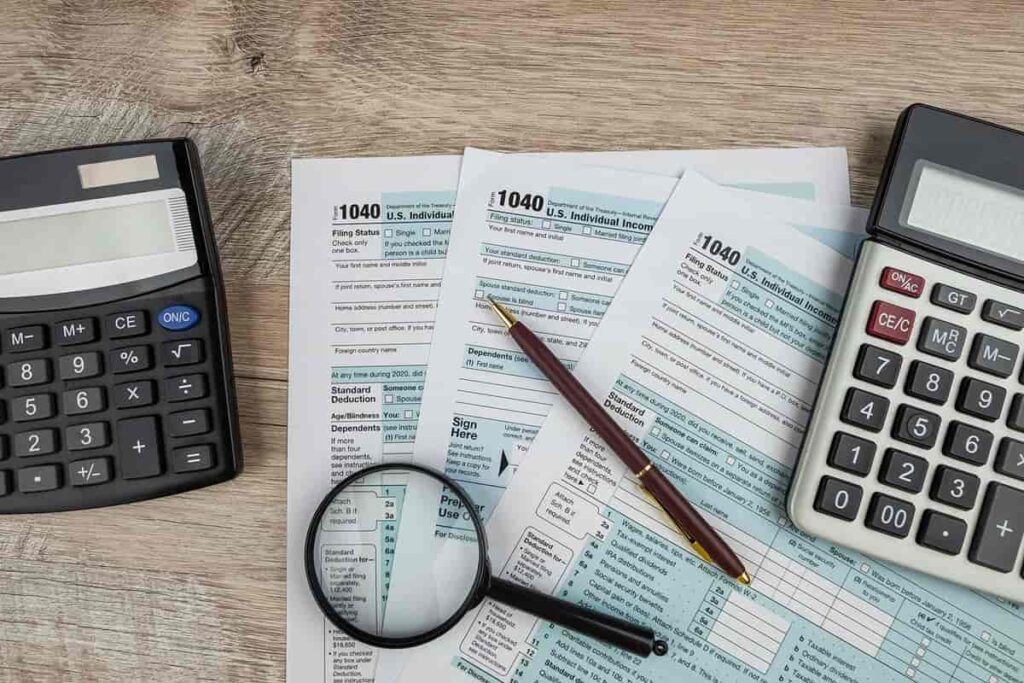Avoiding Value Traps in Beaten Down SPACs
Table of contents

You don’t need a high school education to understand how supply and demand works. It’s intuitive. If many people desire a product with a limited supply, then the price typically goes up. At some point, demand will fall because the product becomes too expensive and people turn to substitutes. But supply and demand theory falls flat on its face when Veblen goods enter the picture.
For a Veblen good, demand goes up as price increases. The higher something is priced, the more people demand it. Screaming Eagle wine from the Napa Valley would be a good example of such a good. In the stock market, we can recognize a similar psychology at work. As a stock price plummets, retail investors start to become suspicious and question whether it’s worth holding. As prices fall, the asset becomes less desirable. Then, when prices go up, investors have a serious case of FOMO and it becomes more desirable. No wonder most investors can’t beat a broad market benchmark.
For more astute investors, price drops represent opportunity, but the challenge always remains the same – how can we tell when a stock price represents “good value for money?” Since most tech stocks don’t have positive earnings, traditional valuation methods like price-to-earnings ratios don’t work. That’s why our own tech investing methodology has adopted the simple valuation ratio which focuses on revenue growth, not earnings. Still, ratios don’t provide us with the sort of intrinsic value measurement that sophisticated institutional investors might use. For that, we can look at past valuations.
Funding and Company Valuations
Most wantrepreneurs spend time designing a logo and securing the perfect domain which is about as far as they get. Then, their yearly domain expiration notice continues to remind them of their failed attempts at starting a business which they pacify by continuing to renew the domain. We’ve all been there.
Creating a successful startup is extremely difficult which is why so few entrepreneurs succeed. If you don’t choose to bootstrap (fund the venture yourself), then you need to raise money, a process that usually follows a somewhat predefined path. For example, a Series A round may give away 20-25% of the company in exchange for some money. How much money? Well, that depends on the valuation. If an entrepreneur gives away 25% of their company for $250,000 then that implies the company is worth one million dollars.
Since technology startups usually experience rapid growth over a sustained time frame, valuations should be increasing over time. If a round of funding takes place at a valuation that’s less than the prior round, that’s referred to as a “down round.” Reasons why a company’s valuation may decrease can often be external such as investors suddenly becoming more risk averse. That appears to be what’s happening today in the public markets.
IPO Valuations and SPACs
“Public Markets Appear to Be Rejecting The IPO Valuations Set By Late-Stage Venture Capitalists And Investment Bankers,” was the title of some commentary by ARK Invest that pointed to some interesting research presented by a Partner at Altimeter Capital which shows that the stock market is valuing one-third of tech companies that went public over the last four years below their pre-IPO private round (this reflects the last time institutional investors valued the company prior to going public). For retail investors, this means you can now buy shares in certain tech companies at a bargain relative to what sophisticated institutional investors were willing to pay years ago.
Another metric we can look at is IPO price compared to today’s price. For example, here’s how three AI drug discovery companies are currently discounted based on what their respective IPOs were priced at.
| IPO Date | Price Paid | Today’s Price | Difference | |
| Exscientia | Sep-21 | $22 | $15.62 | -29% |
| AbCellera | Dec-20 | $20 | $8.28 | -53% |
| Recursion | Apr-21 | $18 | $7.09 | -61% |
It’s easy enough to create a list of companies that had an IPO over the past four years and then compare the current price to the offering price. But for special purpose acquisition companies (SPACs) that didn’t have an IPO roadshow, the only valuation benchmark we have is their last funding round prior to the SPAC taking place – the pre-SPAC funding round. We reached out to the kind souls over at PitchBook who very quickly pulled together pre-funding information for many of the 90 disruptive tech SPACs we’ve covered. After removing any rounds that took place prior to 2017, we then compared the market cap of each SPAC today to the last funding round valuation. Here are the top-ten SPACs for which retail investors are paying a whole lot higher valuation than what institutional investors ascribed.
| Company Name | Last Round | Valuation (USD millions) | Round Date | Market Cap Today (USD millions) | Premium |
| Enovix Corporation (ENVX) | Series F | 45 | Dec-18 | 2202 | 4793% |
| Velo3D (VLD) | Series D | 40 | Jun-20 | 1511 | 3678% |
| IonQ (IONQ) | Series C | 130 | Jun-20 | 2851 | 2093% |
| Hyliion Holdings (HYLN) | Series A | 40 | Sep-17 | 779 | 1848% |
| Rigetti (RGTI) | Series C | 50 | Aug-20 | 768 | 1436% |
| Archer Aviation (ACHR) | Series A | 95 | Jul-20 | 1078 | 1035% |
| Vicarious Surgical (RBOT) | Series A3 | 85 | Aug-20 | 641 | 654% |
| XL Fleet (XL) | Series D | 45 | Sep-17 | 317 | 604% |
| AppHarvest (APPH) | Series C | 110 | Jul-20 | 736 | 569% |
| Matterport (MTTR) | Series D | 350 | Jul-20 | 2336 | 568% |
Since all these companies offered shares to the public at the same price – $10 a share – we can easily see how they’ve performed thus far. Stocks trading at less than the SPAC offering price may be seen by retail investors as having value when they’re actually value traps.
Value Traps in SPACs
A value trap is when investors perceive value in beaten-down share prices when in fact they’re likely to fall much further because of fundamental problems in a company’s business or other reasons. Maybe they were too richly valued to begin with. Here’s how each of these SPACs has performed since their debut (company names link to our past research).
| Company | Thesis | Performance |
| Enovix Corporation | Lithium batteries | +52% |
| IonQ | Quantum computing | +48% |
| Velo3D | Metal 3D printing | -16% |
| Matterport | 3D imagery data | -17% |
| Rigetti | Quantum computing | -33% |
| AppHarvest | Indoor farming | -39% |
| Vicarious Surgical | Robotics surgery | -46% |
| Archer Aviation | Electric vehicles | -54% |
| Hyliion Holdings | Electric vehicles | -55% |
| XL Fleet | Electric vehicles | -78% |
Half these SPACs involve several risky themes that are subject to a lot of hype – quantum computing and electric vehicles. Oftentimes, such companies won’t have revenues, or if they do, they won’t be meaningful (we define meaningful as $10 million per annum or more). Here’s a look at our simple valuation ratio for all ten SPACs (those without revenues are listed as N/A).
| Company | Market Cap | Q4-2021 Revs | Ratio |
| IonQ | 1511 | 0.2 | 1,621 |
| Hyliion Holdings | 736 | 0.2 | 920 |
| AppHarvest | 1078 | 3.1 | 88 |
| XL Fleet | 2336 | 8.0 | 73 |
| Velo3D | 1511 | 10.4 | 36 |
| Rigetti | 768 | 3.2 | 61 |
| Matterport | 779 | 27.0 | 7 |
| Enovix Corporation | 2202 | N/A | N/A |
| Vicarious Surgical | 641 | N/A | N/A |
| Archer Aviation | 317 | N/A | N/A |
A quick and dirty way to tell if there are problems in a business is to look at how much stuff they’re selling. By definition, we expect growth companies to be growing revenues. Without any revenues, we have no indication that a company has a product or service anyone is willing to buy. So, we wouldn’t consider holding Enovix, Vicarious Surgical, or Archer Aviation at any price. We just don’t invest in pre-revenue businesses. For those of you that do, beware of value traps because you won’t see them coming.
As for the rest of these SPACs, Matterport and Velo3D are the only companies that have a simple valuation ratio under 40 which means we wouldn’t consider them to be wildly overvalued. (We don’t invest in any company with a simple valuation ratio of 40 or higher.) Understanding why Matterport shares are trading at a premium to their July 2020 valuation of $350 million could be because the company has meaningful revenues that are growing consistently over time. That being said, they seem to have stalled a bit, something we talked about in a piece titled Matterport Stock: A Richly Valued Metaverse Play. That was less than three months ago when the stock had a $4.765 billion valuation and a simple valuation ratio of 76. As for Velo3D, we wrote about them a year ago and plan to do an update soon.
As for the two quantum computing companies – Rigetti and IonQ – we’ve warned investors that the only way you can measure traction for quantum computing companies is by looking at revenues. If even the world’s most prominent physics experts can’t explain this domain, don’t pretend you have a snowball’s chance in hell. As for the rest of these names, they’re significantly overpriced right now which could mean some are meme stocks. That means they’re being promoted by a coordinated group of individuals who constantly preach the merits of the stock and attack anyone who doesn’t toe the line. We know for certain that IonQ has a fan club that would make BTS jealous (chest bumps for all da boyz with the atom icon in their Twitter profile).
Conclusion
SPACs did retail investors no favors. Of the 90 SPACs we’ve covered, 81% are trading for less than the $10 a share they debuted at. It’s no coincidence that the companies priced at the highest premium compared to their last private funding round also happen to operate in very risky domains, some without having proven product-market fit. Just because a SPAC is trading at a large discount to its $10 a share debut price doesn’t mean there’s value to be found.
Thankfully, data vendors like PitchBook can help shed more light on the shifty world of SPACs (and they’re kind enough to provide us with such data at a moment’s notice). As valuations float back down to earth, signs of a value trap can be companies with depressed share prices that are currently trading at huge multiples compared to pre-SPAC valuations. Tread extra carefully if they haven’t accomplished the most important milestone for any business – meaningful revenues.
Sign up to our newsletter to get more of our great research delivered straight to your inbox!
Nanalyze Weekly includes useful insights written by our team of underpaid MBAs, research on new disruptive technology stocks flying under the radar, and summaries of our recent research. Always 100% free.















Where SPACs are concerned, I would implement a rule whereby I wouldn’t consider investing until I see at least four to six consecutive quarters of revenue growth, plus evidence that they’re able to get their costs under control.
Since most are flush with cash, getting costs under control would take a second seat to revenue growth, something that’s not optional. Revenue growth is a proxy for market share captured which is what disruption is all about.
Agree with Mr. Gilbert. Some companies sell dollar bills at eighty cents and generate revenues, capturing market share while losing millions. The stocks are not only discounting the future but the hereafter as well. Not all the revenue generating money losing SAAS stocks can be successful.
What would be a good metric to measure this? We want to keep things very simple for we are simple people. Maybe runway based on current cash? The company’s stated goals? We’ll give this some thought.
Appreciate your comment. Runway based on current cash may be a good idea. Also revenues rising faster than losses and pathway narrowing toward positive cash flow.
But as you know a lot of this just comes down to management’s ability to execute.
Hi guys. Why do you use 2,8B as Velo3D market cap when you calculate valuation ratio? MC is around 1.8 now and is 1.5B in your own pic from pitchbook
Thank you Hannu for the good spot! We corrected that. It was a typo. The value from the Pitchbook data table is what we used for this piece (the current valuation at the time).